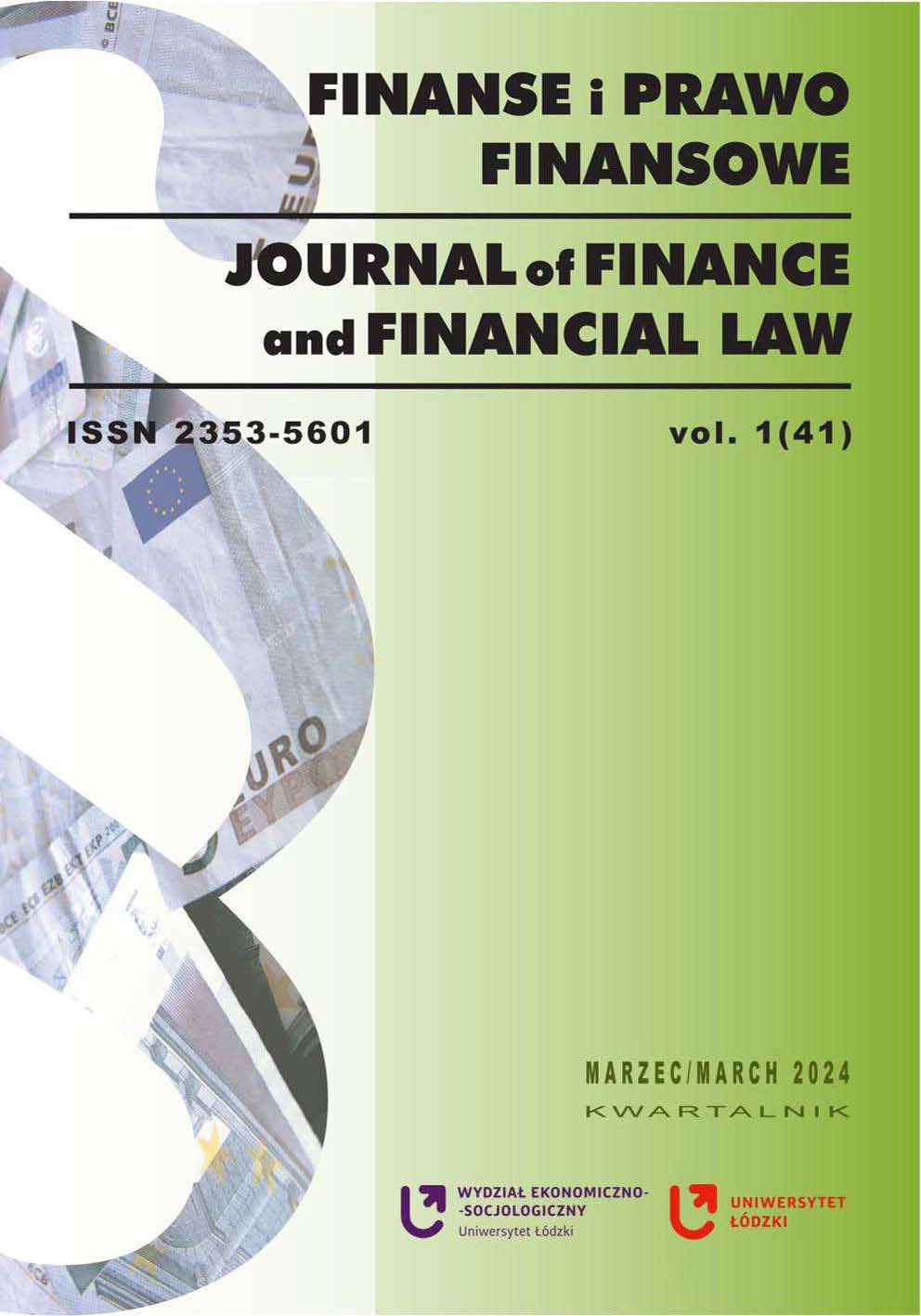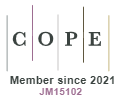Family-Friendly Solutions in Personal Income Tax in Poland in the Context of Modern Demographic Trend
DOI:
https://doi.org/10.18778/2391-6478.1.41.07Keywords:
tax allowances, tax, fertility, pro-family policyAbstract
The purpose of the article. The aim of the article is to assess the importance of family-friendly solutions in PIT aimed at supporting families with children in Poland against the background of EU countries in the context of contemporary demographic challenges.
Research hypothesis. Income tax relief and exemptions are one of the most important tax instruments of family policy in Poland.
Methodology. A descriptive and comparative analysis method was used to achieve the research objective. Data from 2009–2021 on tax preferences and the number of taxpayers benefiting from them were mainly sourced from the MF and the CSO's BBGD. The results of a CBOS survey were also used to assess family support solutions in Poland.
Results of the research. Tax preferences, including child allowances, are one of the most common solutions reached by most EU countries to create conditions for improving fertility rates. Based on the analysis, it was concluded that the changes in the construction of the child tax allowance in Poland, in force since 2014, have made it a strong instrument of support, especially for families with many children and low income. The introduced changes increase the effectiveness of this preference as a redistribution tool and are at the same time assessed as more socially just. Although the modified allowance increased the amount of PIT refunds to families, it did not contribute at all to improving fertility rates, as did the benefits under the “Family 500+”programme. In 2021, the fertility rate (TFR) for Poland oscillated around the value of 1.33, i.e. at an extremely low level.
Downloads
References
Balcerzak-Paradowska, B. (2018). Fazy rozwoju rodziny a polityka rodzinna. W: J. Hrynkiewicz, J. Witkowski, A. Potrykowska, red., Fazy rozwoju rodziny a polityka społeczna. Warszawa: Rządowa Rada Ludnościowa.
Google Scholar
Balcerzak-Paradowska, B. (2015). Polityka rodzinna w Polsce – wyzwania, stan, ocean. Ubezpieczenia Społeczne. Teoria i Praktyka, 2(125), ss. 2–11.
Google Scholar
Durasiewicz, A. (2017). W kierunku rozwoju polityki rodzinnej w Polsce. Warszawa: Wyższa Szkoła Pedagogiczna im. Janusza Korczaka.
Google Scholar
Kornas-Biela, D. (2023). Kulturowo-społeczne uwarunkowania niskiej dzietności w Polsce. W: M. Witkowska, red., Uwarunkowania dzietności. Warszawa: Rządowa Rada Ludnościowa.
Google Scholar
Ministerstwo Finansów (2009–2021), Informacje dotyczące rozliczenia podatku od dochodów osób fizycznych za lata 2009–2021. Warszawa: Departament Podatków Dochodowych.
Google Scholar
Prognoza ludności na lata 2023–2060 (2023). Analizy statystyczne. Warszawa: GUS.
Google Scholar
Skawińska, M. (2012). Polityka rodzinna i edukacyjna – główny priorytet polityki społecznej państwa. Kwartalnik Naukowy OAP UW „e-Politikon”, 3, ss. 129–149.
Google Scholar
Socha, B. (2021). Zapaść demograficzna, na którą „pracowaliśmy” od 30 lat, nie zniknie w pandemii i zamknięciu w domach, www.wszystkoconajwazniejsze.pl [dostęp 25.08.2023].
Google Scholar
Strategia Demograficzna 2040 (2022). Załącznik do uchwały nr 224 Rady Ministrów z dnia 15 listopada 2022 r. M.P. poz. 1196.
Google Scholar
Sytuacja demograficzna Polski do 2021 r. (2022). Analizy statystyczne. Warszawa: GUS.
Google Scholar
Szczudlińska-Kanoś, A. (2019). Polska polityka rodzinna w okresie przemian. Kontekst krajowy i międzynarodowy. Kraków: InstytutSprawPublicznych UJ.
Google Scholar
Thévenon, O. (2011). Family Policies in OECD Countries: A Comparative Analysiss. Population and Development Review, 37(1), ss. 57–87.
Google Scholar
DOI: https://doi.org/10.1111/j.1728-4457.2011.00390.x
Ustawa z dnia 17 listopada 2021 r. o rodzinnym kapitale opiekuńczym, Dz.U. 2021, poz. 2270.
Google Scholar
Ustawa z dnia 4 lutego 2011 r. o opiece nad dziećmi w wieku do lat 3, Dz.U. 2011, nr 45, poz. 235.
Google Scholar
Ustawa z dnia 26 lipca 1991 r. o podatku dochodowym od osób fizycznych, Dz.U. 2022, poz. 2647.
Google Scholar
Wildowicz-Szumarska, A. (2021). Redystrybucja w kontekście nierówności dochodowych. Intencje, rozmiary i skutki. Białystok: Wydawnictwo Uniwersytetu w Białymstoku.
Google Scholar
Wyrzykowski, W. i Kasprzak, P. (2016). Ulga podatkowa jako instrument realizacji pozafiskalnych funkcji podatków. Zarządzanie Finansami i Rachunkowość, 4(1), ss. 17–31.
Google Scholar
Zajkowska, O. (2020). Pieniężne instrumenty polityki rodzinnej a dzietność i aktywność zawodowa kobiet. Studia Demograficzne, 1(177), ss. 61–105.
Google Scholar
DOI: https://doi.org/10.33119/SD.2020.1.4
(www.1) www.data.worldbank.org/indicator/SP.DYN.TFRT.IN [dostęp 5.09.2023].
Google Scholar
(www.2) www.ocalsiebie.pl/blogs/entry/236-przyczyny-zapaści-demograficznej-w-polsce/ [dostęp 25.08.2023].
Google Scholar
(www.3) www.populationeurope.org/en/ [dostęp 5.09.2023].
Google Scholar
(www.4) www.oecd.org/els/family/database.htm#DATABASES [dostęp 20.12.2023].
Google Scholar
(www.5) https://eurydice.eacea.ec.europa.eu/pl/national-education-systems/poland/dostepnosc-placowek [dostęp 20.12.2023].
Google Scholar
Downloads
Published
How to Cite
Issue
Section
License

This work is licensed under a Creative Commons Attribution-NonCommercial-NoDerivatives 4.0 International License.














